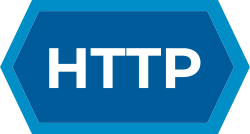| HTTP |
|---|
 |
| Request methods |
| Header fields |
| Response status codes |
| Security access control methods |
| Security vulnerabilities |
HTTP response splitting is a form of web application vulnerability, resulting from the failure of the application or its environment to properly sanitize input values. It can be used to perform cross-site scripting attacks, cross-user defacement, web cache poisoning, and similar exploits.
Contents
The attack consists of making the server print a carriage return (CR, ASCII 0x0D) line feed (LF, ASCII 0x0A) sequence followed by content supplied by the attacker in the header section of its response, typically by including them in input fields sent to the application. Per the HTTP standard (RFC 2616), headers are separated by one CRLF and the response's headers are separated from its body by two. Therefore, the failure to remove CRs and LFs allows the attacker to set arbitrary headers, take control of the body, or break the response into two or more separate responses—hence the name.